If I began this post by writing: “take 4-5 dozen ripe bananas and mash them” (which is how my mother-in law’s recipe begins), you would probably stop reading right here. So I’m going to run ahead of myself, to the very end, and begin with a fragrant, ruby coloured jam of bananas, or really, officially, a jelly. Whatever you call it, when you eat a spoonful, it makes you sigh and shut your eyes in bliss.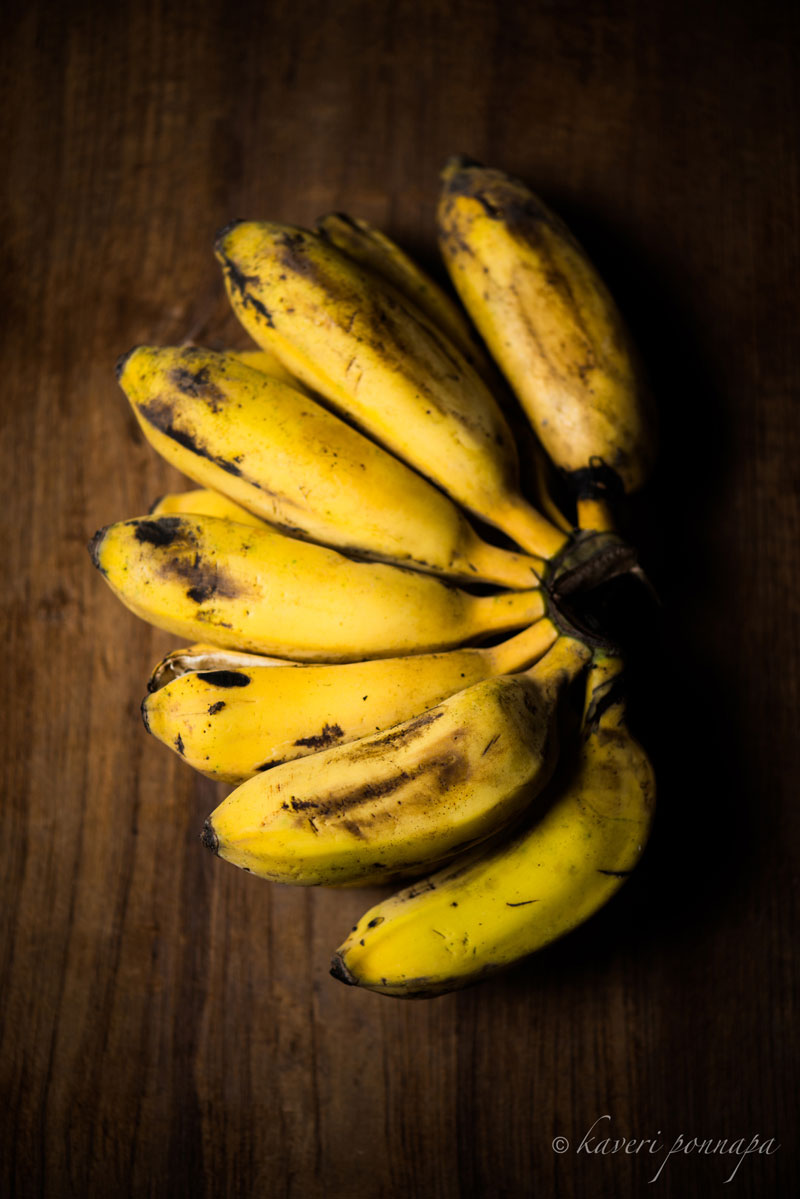 At a corner of the verandahs that often run outside the kitchens of plantation homes, fringed by coffee bushes, or in storerooms where provisions, fruits and vegetables are stashed away, there is always a sturdy cluster of green, or just ripening bananas standing like a sentinel. And the chances are, it is mare bale, with its dense, sweet and flavourful flesh, or sometimes, the heavyweight of Coorg bananas, the opulent, red-skinned chonde bale, or delicate, scented puv bale.
At a corner of the verandahs that often run outside the kitchens of plantation homes, fringed by coffee bushes, or in storerooms where provisions, fruits and vegetables are stashed away, there is always a sturdy cluster of green, or just ripening bananas standing like a sentinel. And the chances are, it is mare bale, with its dense, sweet and flavourful flesh, or sometimes, the heavyweight of Coorg bananas, the opulent, red-skinned chonde bale, or delicate, scented puv bale. 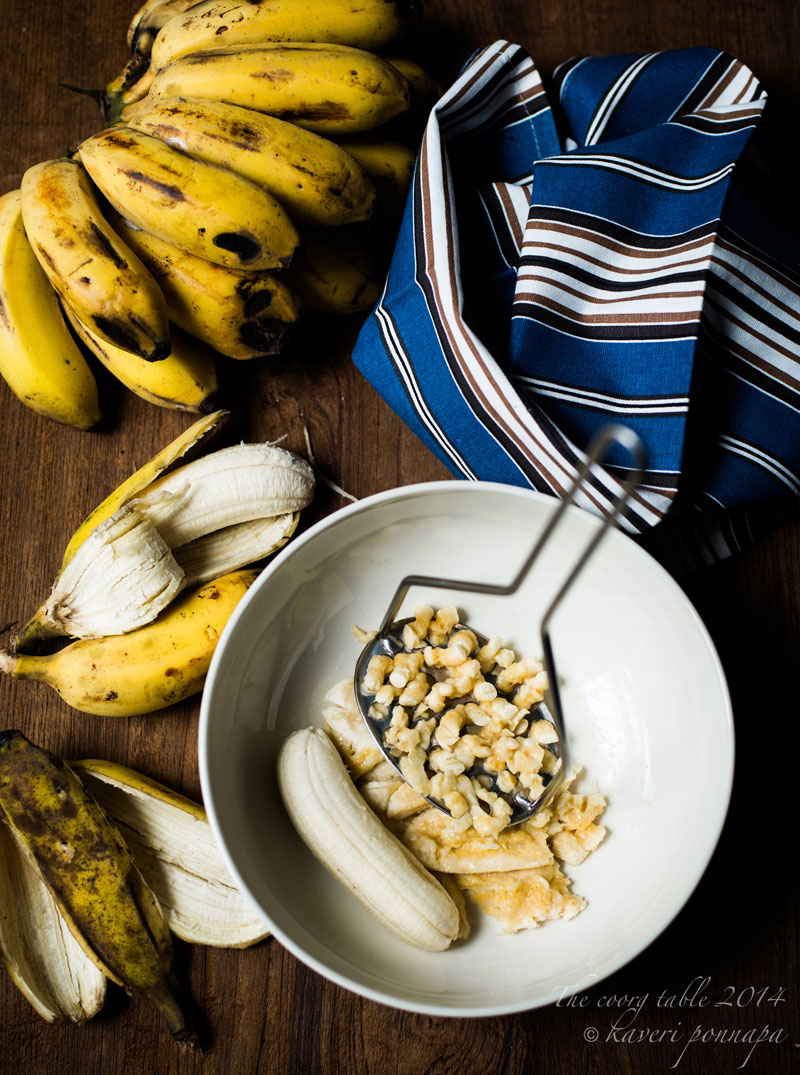 Mara bale, rich and filling, is a well-loved fruit, an indispensible part of the kitchen exchange that is constantly taking place around Coorg, where friends and neighbours ply each other with produce from their, vegetable gardens, fruit trees and estates. This is one of those rustic, homey sort of treats, and you could never imagine that it could be turned into sheer indulgence on your table.
Mara bale, rich and filling, is a well-loved fruit, an indispensible part of the kitchen exchange that is constantly taking place around Coorg, where friends and neighbours ply each other with produce from their, vegetable gardens, fruit trees and estates. This is one of those rustic, homey sort of treats, and you could never imagine that it could be turned into sheer indulgence on your table. 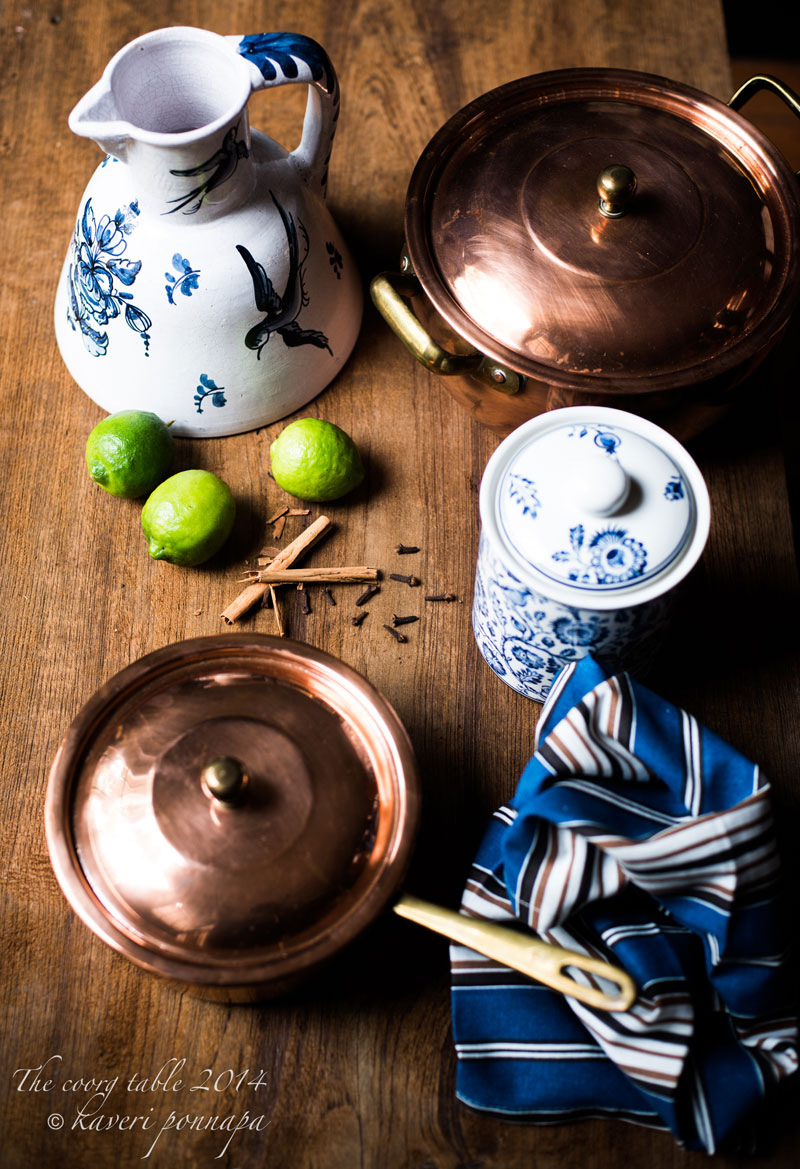 Mare bale’s hidden qualities, however, only emerge after hours of effort. Time spent mashing up ripe bananas into a mess; then making it look even worse by adding water and giving it a good boil. You need to strain the boiled mass, and all you get for your efforts is a thin stream of unattractive, greyish liquid. It is this process that makes it a jelly, rather than a jam, as it contains no fruit pulp, but is made from an extract instead. It is almost impossible to imagine that this feeble, dingy looking extract will, with some sugar and lime, a few pieces of cinnamon or cassia bark, cloves and, as the saying goes, “with patience and a heavy pot”, transform itself into a jewel coloured, soft jelly. When a sweet aroma begins to fill the air, and a faint pink tinge begins to creep into the extract you’ve been boiling steadily, you know the jam is going to turn out right.
Mare bale’s hidden qualities, however, only emerge after hours of effort. Time spent mashing up ripe bananas into a mess; then making it look even worse by adding water and giving it a good boil. You need to strain the boiled mass, and all you get for your efforts is a thin stream of unattractive, greyish liquid. It is this process that makes it a jelly, rather than a jam, as it contains no fruit pulp, but is made from an extract instead. It is almost impossible to imagine that this feeble, dingy looking extract will, with some sugar and lime, a few pieces of cinnamon or cassia bark, cloves and, as the saying goes, “with patience and a heavy pot”, transform itself into a jewel coloured, soft jelly. When a sweet aroma begins to fill the air, and a faint pink tinge begins to creep into the extract you’ve been boiling steadily, you know the jam is going to turn out right. 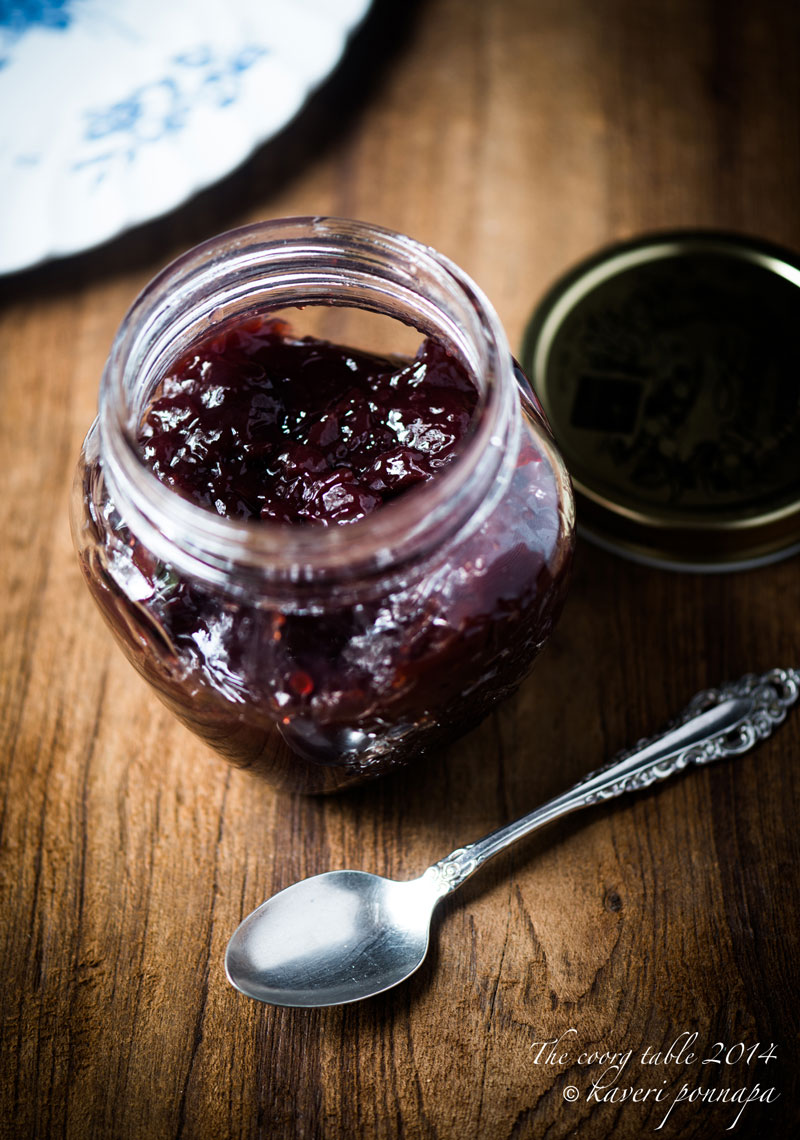 There were always quantities of it that came my way, and I never once imagined the effort it took to get that bottled beauty until I began to make this jam myself. Following a recipe rescued from a small scrap of paper, written down in an inspired moment, from my mother-in-law, with – thankfully – her meticulous instructions for proportions included, I now make it for my family. The latest batch in my kitchen, made from a gift of a statuesque bunch of bananas that arrived from Coorg, gave me the best jam I have ever made, not to mention endless hours of happy conversation with friends who dropped by and tasted it for the first time. Their curiosity, excitement and shocked delight when they ate a spoonful were so infectious, that I could have happily gone back to mashing and stirring another batch for the 3-4 hours it takes to make the jam.
There were always quantities of it that came my way, and I never once imagined the effort it took to get that bottled beauty until I began to make this jam myself. Following a recipe rescued from a small scrap of paper, written down in an inspired moment, from my mother-in-law, with – thankfully – her meticulous instructions for proportions included, I now make it for my family. The latest batch in my kitchen, made from a gift of a statuesque bunch of bananas that arrived from Coorg, gave me the best jam I have ever made, not to mention endless hours of happy conversation with friends who dropped by and tasted it for the first time. Their curiosity, excitement and shocked delight when they ate a spoonful were so infectious, that I could have happily gone back to mashing and stirring another batch for the 3-4 hours it takes to make the jam. 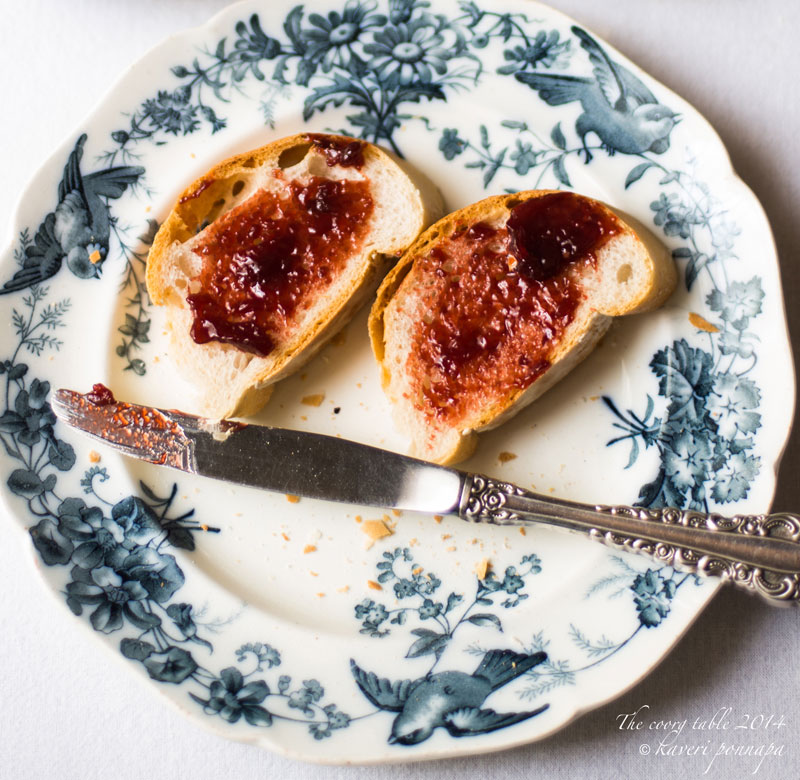 Banana jam – and I will continue to call it a jam, since that’s what I have got used to now – goes with everything, and it belongs everywhere: in a rustic kitchen, or on the best kept table. Its smooth consistency makes it a perfect topping for vanilla ice cream; it makes a fabulous cake filling, and you can spoon it into pastry cases for unusual jam tarts. It was my adored childhood breakfast companion with hot akki ottis and a large pat of sweet smelling home made butter so fresh it still had drops of water dotting its surface – and it still is. Its sumptuous texture, the sweet scent and taste of ripe banana with a whiff of cinnamon and cloves, all rolling over your tongue together, arrived at after hours of boiling, is something to be enjoyed slowly, when you have all the time in the world for an extended breakfast. This is a jam that condenses the simplicity of the fruit into something far more rich and luxurious.
Banana jam – and I will continue to call it a jam, since that’s what I have got used to now – goes with everything, and it belongs everywhere: in a rustic kitchen, or on the best kept table. Its smooth consistency makes it a perfect topping for vanilla ice cream; it makes a fabulous cake filling, and you can spoon it into pastry cases for unusual jam tarts. It was my adored childhood breakfast companion with hot akki ottis and a large pat of sweet smelling home made butter so fresh it still had drops of water dotting its surface – and it still is. Its sumptuous texture, the sweet scent and taste of ripe banana with a whiff of cinnamon and cloves, all rolling over your tongue together, arrived at after hours of boiling, is something to be enjoyed slowly, when you have all the time in the world for an extended breakfast. This is a jam that condenses the simplicity of the fruit into something far more rich and luxurious. 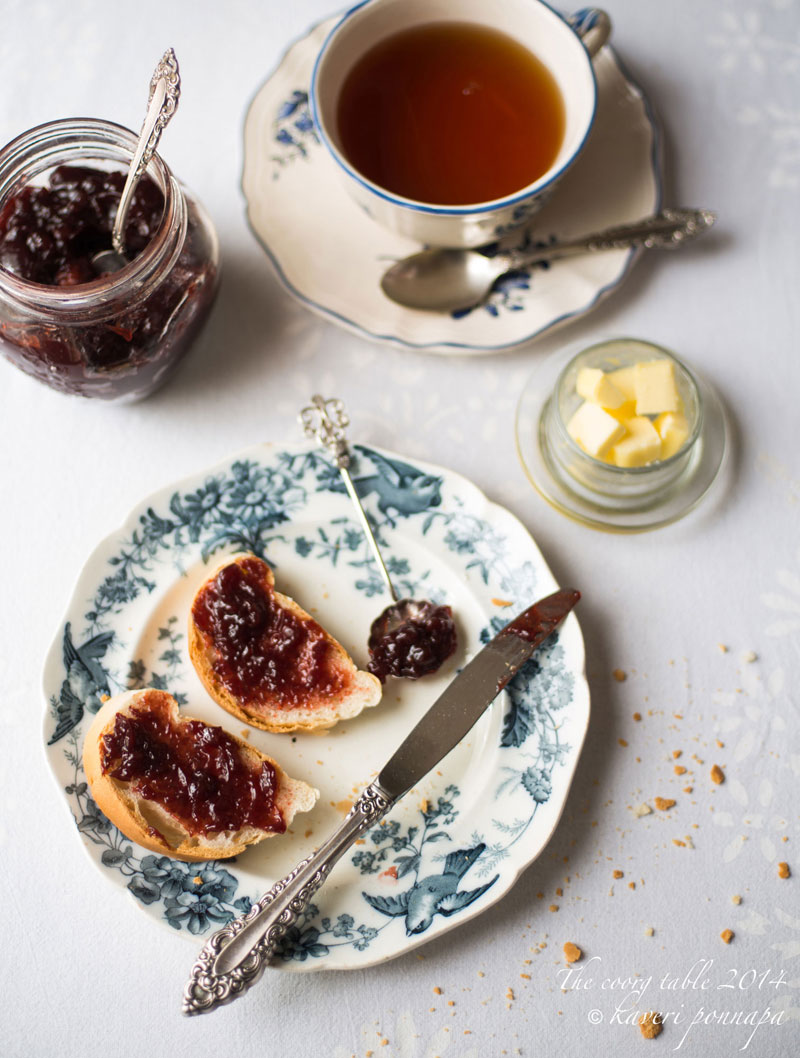 I had always wished that I could find a way to serve this beautiful creation in a more elegant way, with the flourish that it deserved, when one day, the idea struck me – spoon sweets. Spoon sweets are offered as a sign of hospitality across Greece, Russia and the Middle East. Slightly firm, cooked fruit, sitting on a cushion of thick syrup is offered to guests in a silver spoon, along with a glass of cold water, to refresh themselves. There are as many versions of spoon sweets as there are regions that make them. Strictly speaking, banana jam from the kitchens of Coorg does not qualify as a spoon sweet, as it has no chunks of whole fruit in it. But it captures the sweet, fresh flavour of the banana in its soft texture, touches on the spirit of the generous hospitality of the Coorg countryside and is a perfectly elegant way to finish a meal. What better way to appreciate the presence of a friend or a guest than by offering them a spoonful – or maybe several spoonsful – of this little bit of home made luxury?
I had always wished that I could find a way to serve this beautiful creation in a more elegant way, with the flourish that it deserved, when one day, the idea struck me – spoon sweets. Spoon sweets are offered as a sign of hospitality across Greece, Russia and the Middle East. Slightly firm, cooked fruit, sitting on a cushion of thick syrup is offered to guests in a silver spoon, along with a glass of cold water, to refresh themselves. There are as many versions of spoon sweets as there are regions that make them. Strictly speaking, banana jam from the kitchens of Coorg does not qualify as a spoon sweet, as it has no chunks of whole fruit in it. But it captures the sweet, fresh flavour of the banana in its soft texture, touches on the spirit of the generous hospitality of the Coorg countryside and is a perfectly elegant way to finish a meal. What better way to appreciate the presence of a friend or a guest than by offering them a spoonful – or maybe several spoonsful – of this little bit of home made luxury? 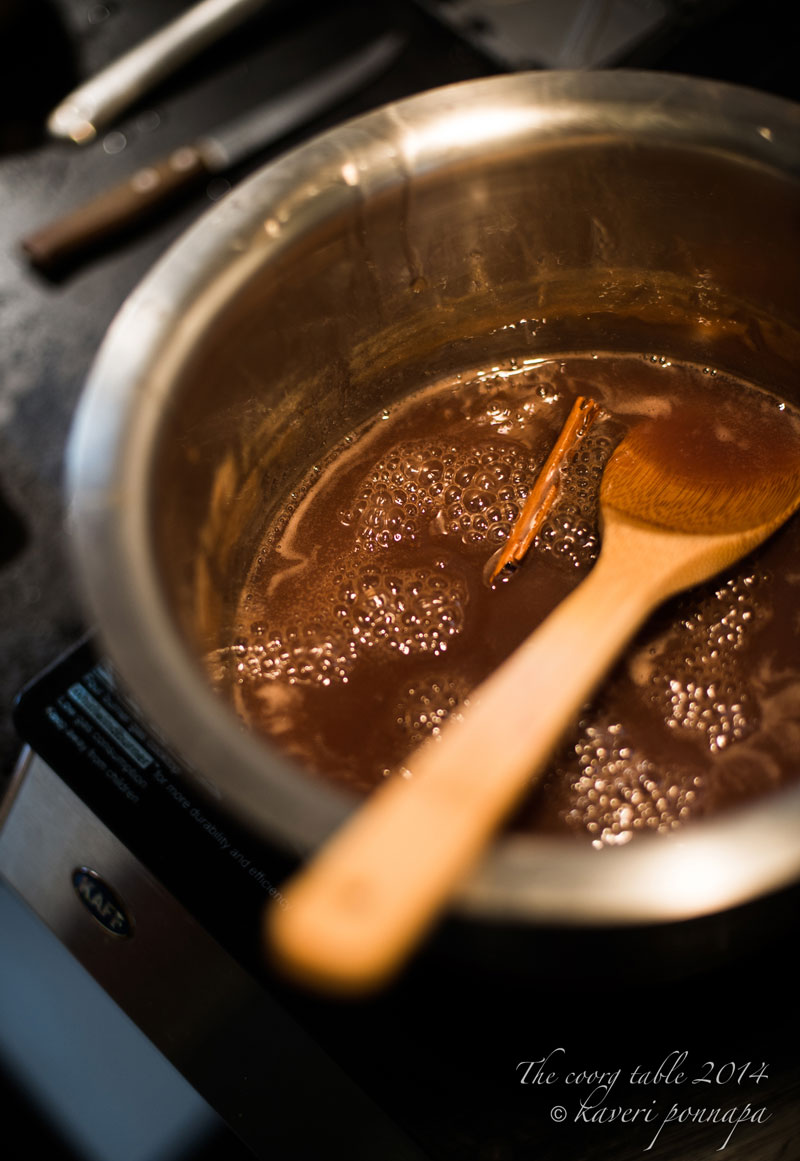
In case you’re wondering about my missing recipe for Banana Jam on this page, it is part of a wider project, and will appear soon.
Thank you for visiting this page. If you read something that you enjoy, or see an image that you like, please take a moment to write a response. Do look out for the recipes of all the food featured here in my upcoming cookbook.




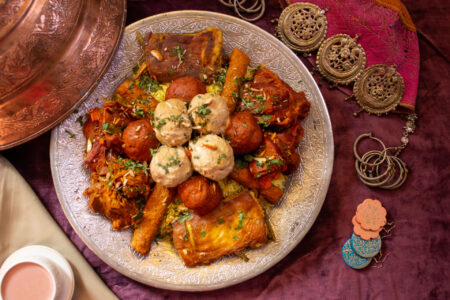
Hi kaveri
Do you sell your products online..
Hi Shweta, I don’t sell any products: I only cook, and write!
Hi Kaveri,
Stumbled upon your blog this morning and what a super find! Tried to look for Vanishing Kodavas on amazon and couldn’t find it. Also couldn’t find a way to buy the book from the website. Hows the recipe book coming along and when is it out? cant wait to get my hands on it. Thanks for creating this amazing blog! lit up my day!
Best Wishes,
Sush
Thank you very much for your generous words and appreciation, Susmita. I’m delighted that you have found your way to The Coorg Table.I am trying to work as quickly as I can, but there seems to be a lot of work that still needs to go into the cookbook. Please do keep reading the posts, and I would love to hear from you if you enjoy any of them. I’ll inbox you regarding The Vanishing Kodavas. Warm wishes. Kaveri.
Hi Kaveri, Please do mail me your bannana jam. I wish to try as soon as possible.
Hello Cauvery, thank you for visiting this page-my recipe for banana jam and several other favourites are slotted to go into a cookbook that I am working on. It may take a while, but it will be there to enjoy, hopefully before long. Best wishes.Kaveri
Dear Ms.Ponappa, a very well written blog with fine pictures. Makes me wonderfully nostalgic. Do share with us all the guava jam recipe, I have been wanting to make some from a very long time.
Thank you, Apoorva, I’m so happy that you enjoy reading the blog. I have just finished making a huge batch of guava jelly, since there’s a glut of fruit in the market. I hope to have the post up sooner rather than later. So do watch these pages, and I hope it is in time for you to take advantage of the season. Warm wishes. Kaveri.
Hello Kaveri, I’m ecstatic to have found your blog. I enjoy Coorg cuisine and your blog is a beacon for novices like me 🙂 Thanks very much for making this easy.
Hi Reshma, welcome to The Coorg Table! I hope you enjoy yourself trying out these recipes, and many more to come. They are all much-loved, really delicious family favourites, and I have tried to make it as easy as possible to re-create them in your own kitchen. Have fun, do keep visiting the website and if you have any queries, you can always mail me. Warm wishes.Kaveri.
Kaveri you bring back childhood memories for me. Thank you. looking forward to trying out the jams and jellies.
Hello Chitra, thanks so much for writing in and sharing your thoughts. I’m happy that this post evoked memories. We have such wonderful food in Coorg, and all of us grew up eating delicious stuff. I loved the way there was always something new on the table, according to the season. Do keep writing in, it’s always nice to hear from people (also encouraging, 😉 to write more). Warm wishes. Kaveri.
After seeing image I asked my mom, I have never seen you doing this, She told that her mom (my granny) made jam of Banana, Papaya, Gauva. But my mom has forgotten the recipe of this. After seeing the image it is mouth watering I can’t wait. I will call my granny and ask for the recipe. If I didn’t get from her I will let you know then please post ASAP… Thanks for bringing back forgotten dishes which was hidden somewhere in the past……
Hi Kaverappa! I hope you get the recipe from your grandmother,if not, this one will be up soon. Like you grandmother, mine also made delicious jam out of all kinds of fruits. Fortunately most of the recipes have come down from one source or the other. Once you have tasted these beautiful homemade jams, it’s very difficult to eat the commercially produced ones – so the effort of making them is worth it. Warm wishes.Kaveri